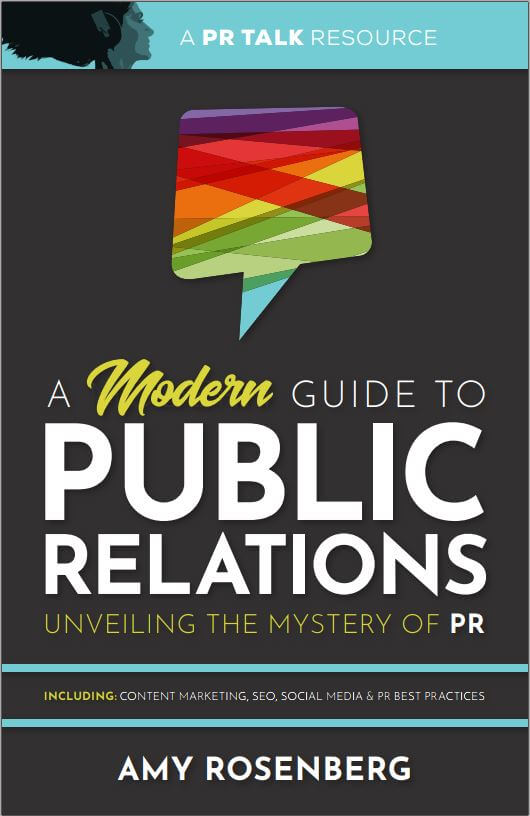![Roger Valdez: Forbes Columnist [Podcast]](https://www.veracityagency.com/wp-content/uploads/Roger-Valdez-Seattle-Times-Dean-Rutz-800x600.jpg)
Roger Valdez: Forbes Columnist [Podcast]
Seattle Housing Advocate and Forbes Writer, Roger Valdez, Explains the Difference Between Advocacy and Public Relations
Roger Valdez is the embodiment of my two work passions—public relations and real estate. As the Director of Seattle for Growth, formerly Smart Growth Seattle, Roger has been advocating for more housing options in every Seattle-area neighborhood for all kinds of incomes, from micro-housing to mansions and tenant housing to owner-occupied.
“A proliferation of product type enables consumers to make better choices. If the choices are limited, competition increases and prices increase. More is better,” Roger says.
This conversation traversed between heady real estate policy, inventory and pricing topics; and edgy PR tips that might leave some of us shaking in our boots. High-level thoughts on how journalists can influence the housing market and policy are intertwined with real-life examples of how he relates to the press. The conversation gets really interesting when Roger relates urban living to a social mashup forcing us to work through uncomfortable situations, like homelessness and crime, together. So you’ll surely be entertained as we near the end of the episode where Roger’s tips for getting included in his columns can be found.
How the Press Affects Consumer Sentiment
As I stumble over the difference between what a “median” and a “mean” price is (you’d think I’d remember this from my real estate agent days), Roger gets into how the press, especially the Seattle Times, can use shocking language to influence opinion or confirm existing biases. For example, pointing to “Average Prices” to sum up how the housing market is doing within a headline can negatively influence buyer sentiment. Roger concedes that the article is factual, but buried at the end is the explanation about what’s truly going on in the market. Headlines can strongly deter would-be homeowners because they don’t read the full article.
“Using average prices and wages to measure our so-called crisis is an abuse of averages,” Roger says. “The easiest thing the press can do is confirm people’s bias.”
Waging a Press War: Advocacy versus PR
In his role at Seattle for Growth, Roger publically brings criticism to reporters and editors. It’s not that he’s getting huffy when they’re not writing the story he wants, but it’s situations like the above that get him worked up. “When it comes to price, dig into what the dynamic is,” he says. “How can we better utilize data to talk about the market?”
Roger says that he might think differently about blatantly fighting with the press if he were representing multiple PR clients. One burnt bridge could affect all the clients. He points out that he’s an advocate in the broadest possible sense. Beyond just aiming for the story, an advocate is in it for the long haul, attempting to change the way we think, ultimately affecting policy. He recognizes the press as having huge power in this regard. So if he feels that they are misunderstanding an issue and unintentionally swaying people, he’s going to do everything in his power to correct that — whether that be complaining directly to the newspaper’s staff, commenting with a correction online or utilizing his own channels to post about it. “If a story is really bad someone will get hurt because of it,” he says.
One thing is for sure: Roger is not coy. However, it’s important to keep in mind that Roger doesn’t think his bold approach with newsrooms actually hurts his chances of future stories. “They get where I’m coming from. Hearing criticism makes them think twice.” But again, he reminds us that he wouldn’t be as aggressive if he were solely working in a PR capacity.
What is Good Journalism?
“Journalism is not an easy job,” Roger admits. “A good article needs to help the discussion.”
He’s quick to dole out compliments for good journalism, pointing to an article by David Kroman on Crosscut, which examined the proposed fees Seattle landlords would face when raising their rents by a certain amount. In the article, David interviews a source in Portland, where this bill has already passed, to hear how it has affected things here.
This way of digging into the story is the epitome of honorable journalism for Roger. Uncovering every angle to fully understand all aspects, combined with broadening the language so that situations aren’t overly simplified is what the Seattle real estate market needs right now and who better to play the role than its local journalists?
Getting in Roger’s Forbes Column
Just like quality journalism could use a discerning touch, successful PR efforts require the same amount of discipline. To possibly garner a mention in his Forbes.com column about the Seattle real estate market, Roger offers the following advice:
- Tailor your pitch for each press audience.
- Don’t make it confusing so he doesn’t have to do too much sleuthing.
- If it’s a broad press release involving multiple parties, tell him which player you are representing in the story.
About the guest: Roger Valdez
Roger Valdez has been involved in public policy in the areas of education, health, and housing for the past 20 years. He is Director of Seattle For Growth, a housing and growth advocacy organization pushing for more housing supply for all levels of income in Seattle, and a columnist for Forbes.
Connect and follow Roger on social media:
This episode of PR Talk is brought to you by PRSA Oregon
Throughout Oregon and Southwest Washington, PRSA provides members with networking, mentorship, skill building and professional development opportunities – whether you are a new professional fresh out of college or a skilled expert with 20 years in the industry. Check out PRSAoregon.org for more information on how membership can help you grow and connect.
PR Talk is sponsored by monday
In such a fast-paced, multi-faceted work environment, it can be tough to stay on top of everything. monday is the collaboration tool trusted by businesses of all kinds to help cut down the clutter and streamline productivity. Learn more at monday.com and signup for a free trial. You’ll see in no time why so many teams around the world are choosing monday for their project management needs.
PR Talk listeners can use the coupon code BetterExecute for a 15% discount.




![Unlock the Mysteries of the Building & Construction Industry with Nick Bjork, Daily Journal of Commerce [Podcast]](https://www.veracityagency.com/wp-content/uploads/Nick-Bjork-DJC-ChalkTalk-1024x683-1024x675.jpg)










